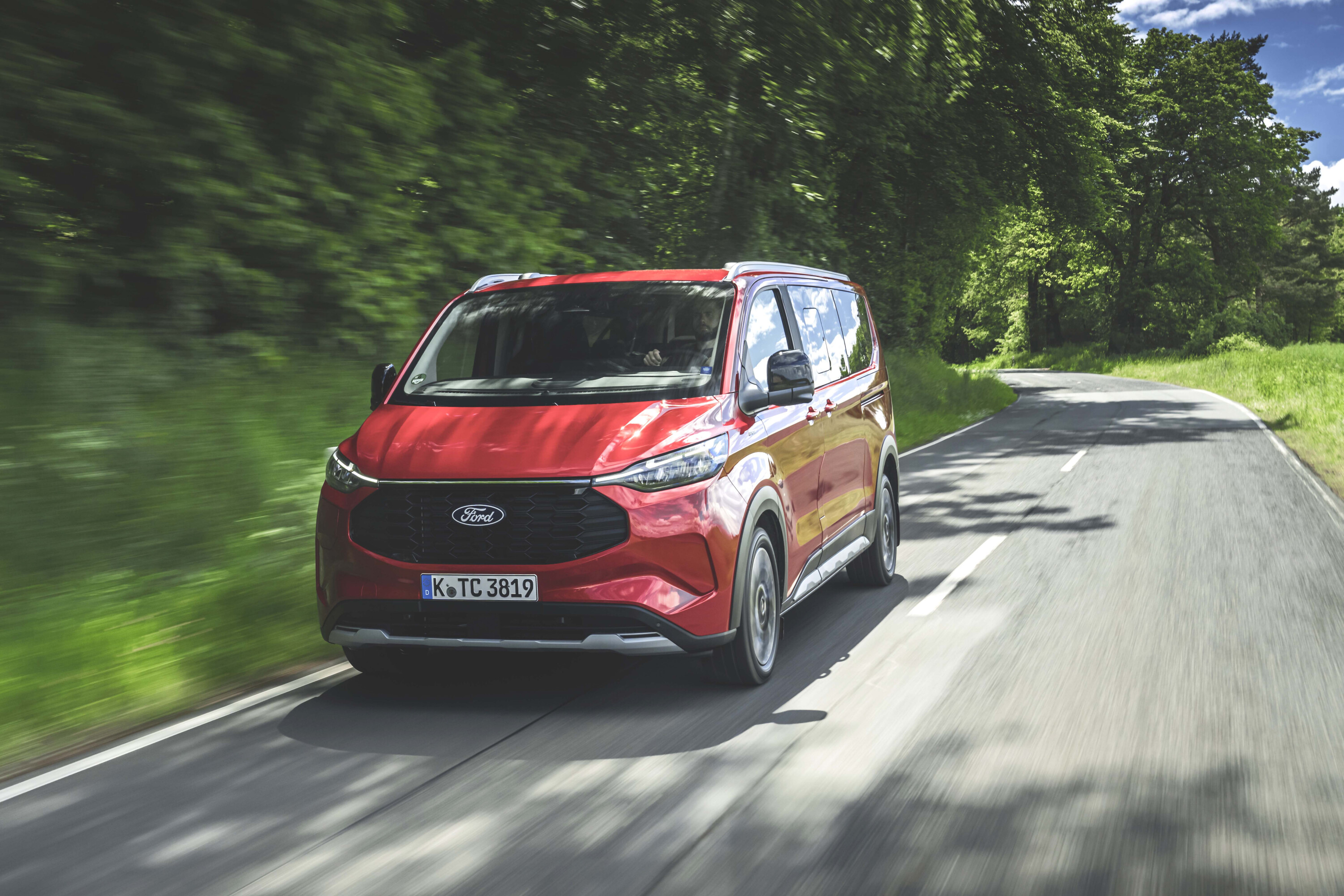
Things we like
- Spacious and reconfigurable cabin
- Drives more like a car than a van
- Attractive exterior styling
- Solid price/spec offering
Not so much
- Luggage space could be improved upon
- Glass roof may be a liability in summer
- No centre seat provision for ISOFIX
- No electric/hybrid option… yet
Are we sick of SUVs yet?
The sales figures say “haha, no”, yet the imminent arrival of Ford’s new Tourneo makes a compelling argument as family-friendly transport – and one that might entice at least a few of us to trade in the Kluger or Prado and get themselves into a boxy bus instead.
The Tourneo takes aim at similarly sized people-movers with commercial vehicle origins like the Toyota Granvia, Hyundai Staria and Volkswagen Multivan – as well as the reigning king of the people-mover segment, the Kia Carnival.
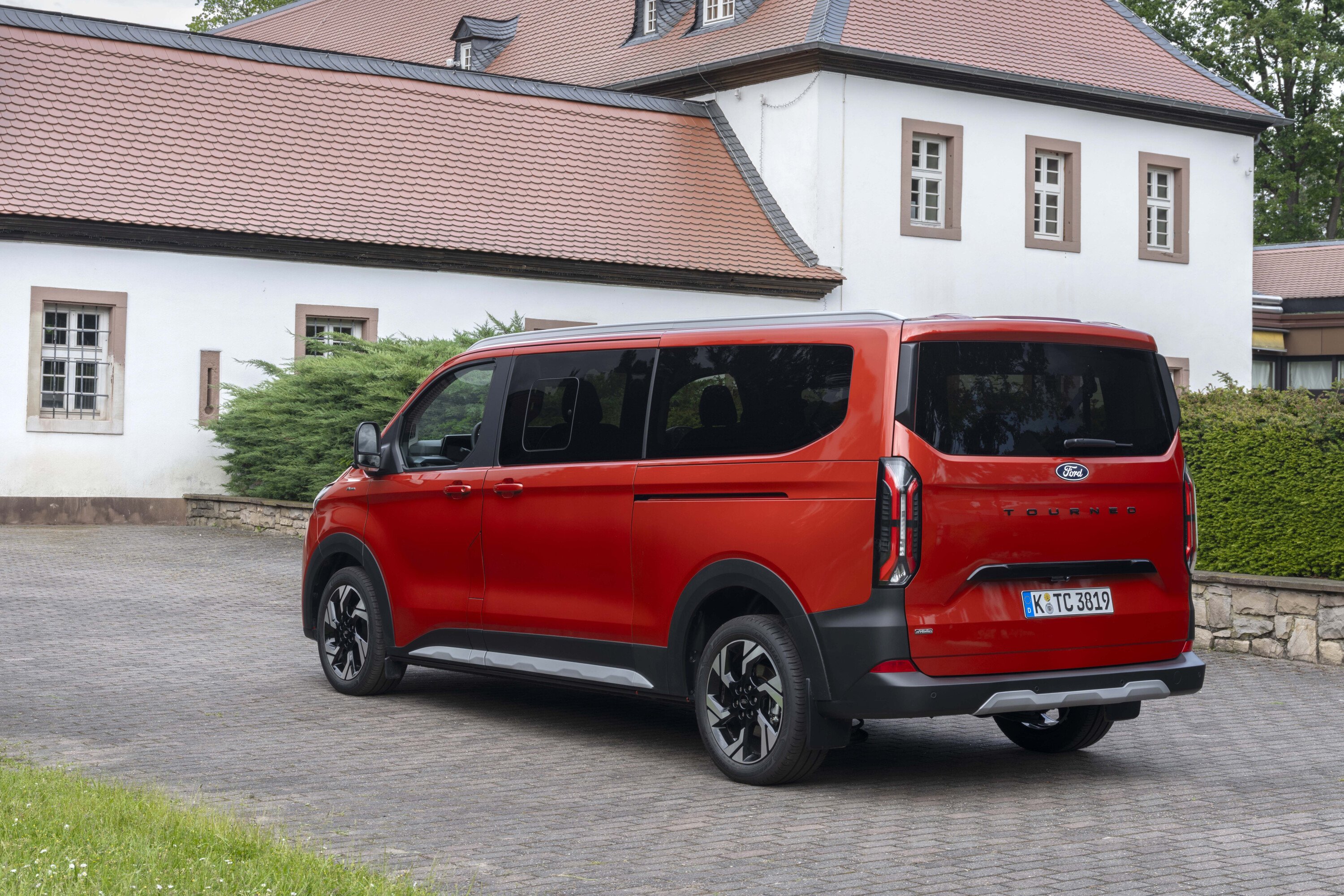
This is new territory for the Blue Oval’s Australian arm, with the only Transit-based personnel carriers to date being utilitarian buses and dual-cab variants of the commercial van range. Does the Tourneo have a warmer vibe than those efforts?
And with the Tourneo sharing its DNA with the new-generation Transit Custom, which made a strong first impression in all-electric E-Transit Custom form during its global media launch, does it show the others how to make a van-based people-mover with passenger – and driver – appeal?
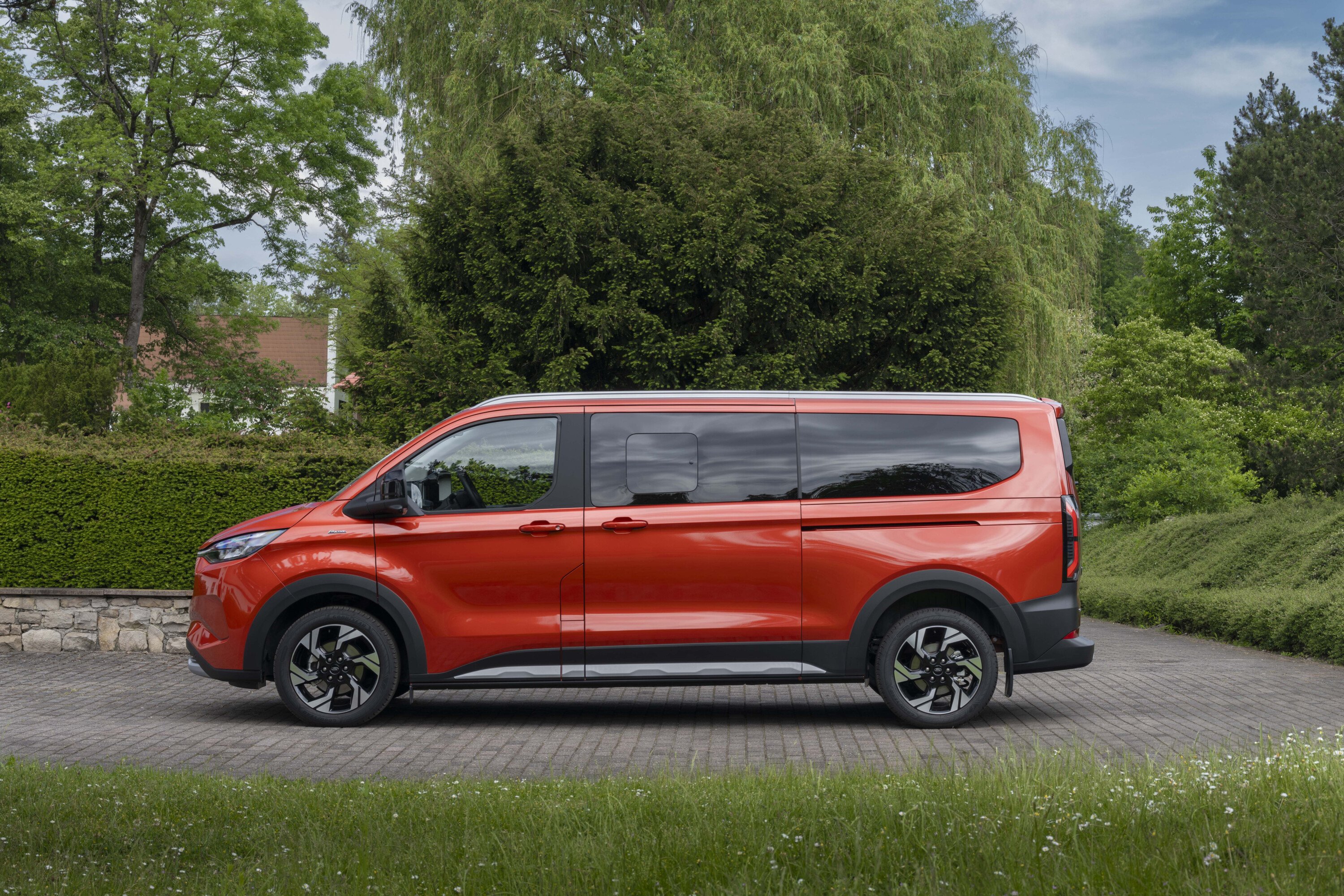
JUMP AHEAD
- How much is it, and what do you get?
- How do rivals compare on value?
- What’s it like to drive?
- Interior comfort, space and storage
- How much fuel does the Ford Tourneo use?
- How safe is the Ford Tourneo?
- VERDICT
How much is it, and what do you get?
The first batch of Tourneos aren’t due to arrive until the final quarter of this year, however Ford Australia has already announced pricing for the two-variant range.
The entry-spec Tourneo Active will retail for $65,990 before on-roads, while the high-spec Tourneo Titanium X will wear $70,990 pricetag.
For the Active, the following features will be standard:
| 2024 Ford Tourneo Active features | |
|---|---|
| Power sliding rear doors on left and right | Wireless Apple CarPlay and Android Auto |
| Heated driver and front passenger seats | Wireless phone charging pad |
| Track-mounted reconfigurable second and third row seats | 17-inch alloy wheels |
| Keyless entry and ignition | LED headlamps and tail lamps |
| Tri-zone climate control with separate rear cabin controls | Adaptive cruise control |
| 13-inch infotainment touchscreen with Ford Sync4 operating system | |
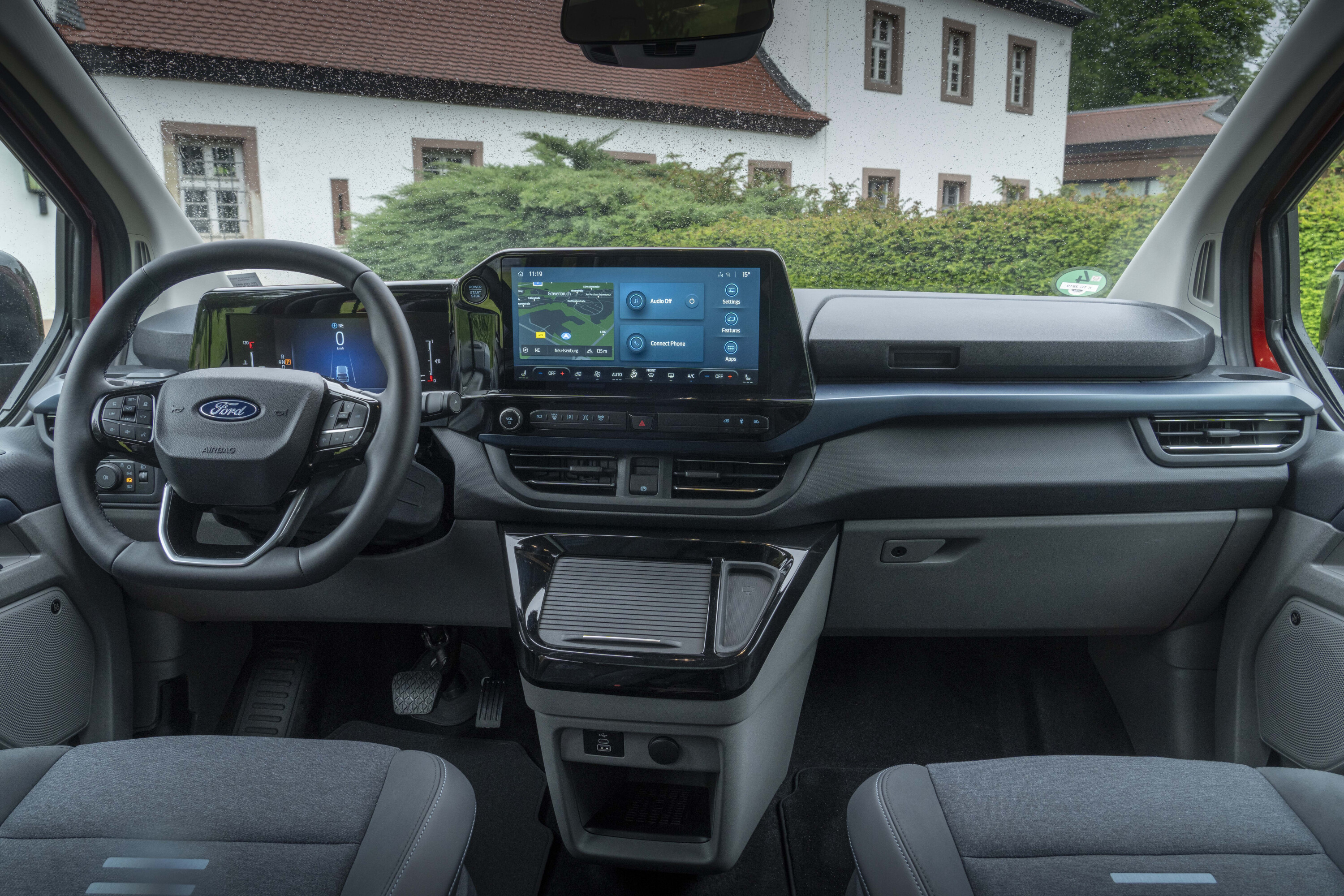
Spending more on the Titanium X nets a few extra luxuries, with all of the Active’s features (with the exception of the black plastic body cladding and wheels) plus the following:
| 2024 Ford Tourneo Titanium X features | |
|---|---|
| Panoramic fixed glass sunroof (no retractable shade) | B&O premium audio system |
| Artificial leather upholstery | 360-degree parking camera. |
| Power-adjustable front seats | Unique 17-inch alloy design |
How do rivals compare on value?
With a price range of $65,990 to just over $70K, the Tourneo competes with both upper-end mainstream people-movers, as well as lower-spec premium people-movers.
Key among them are the Hyundai Staria Highlander – which costs $64,000 as a FWD petrol or $67,000 as an AWD diesel – and the Kia Carnival.
The Carnival’s Sport + and GT-Line grades align most closely to the Tourneo, with the Sport + Diesel retailing for $64,610 and the GT-Line Diesel priced at $72,910, however the Carnival’s lower-spec S and Sport grades provide more affordable options, reaching as low as $50,150 for the Carnival S petrol.

The availability of a petrol powertrain is also something the Tourneo doesn’t offer in Australia – though Ford’s local office is flirting with the idea of bringing in the all-electric E-Tourneo.
Other rivals include the Toyota Granvia and Volkswagen Multivan, both of which, like the Hyundai Staria and Tourneo, transform a commercial van into a passenger-carrying micro-bus. Of those, the Granvia costs significantly more on a like-for-like basis, with a Tourneo-equalling eight-seat layout coming at a $2000 premium over the standard six-seat configuration.
The VW Multivan aligns more closely, with its Comfortline SWB and Premium SWB priced at $69,290 and $72,290 respectively, though note that a new-generation Multivan is around the corner.
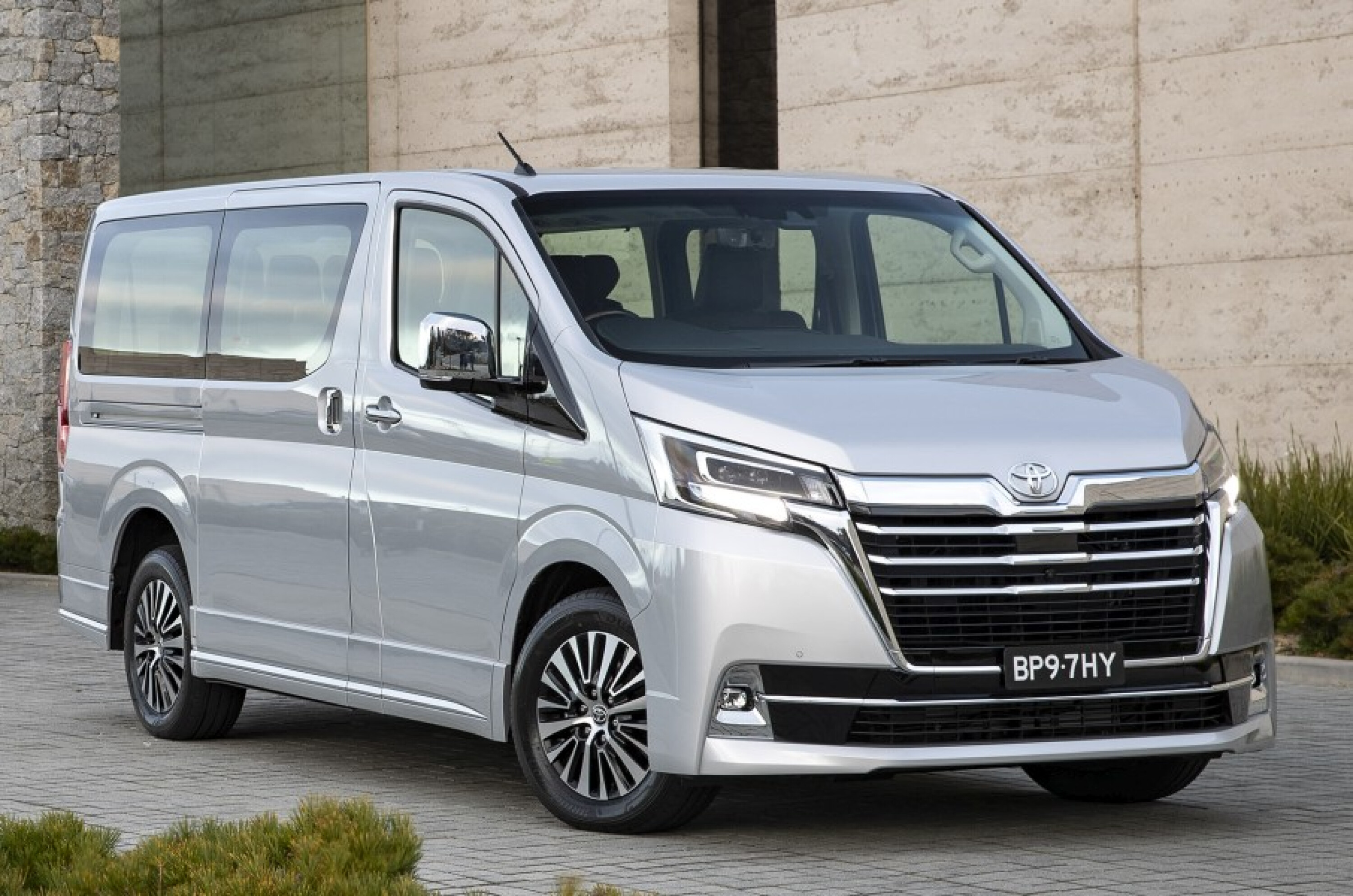
What’s it like to drive?
Australia-bound Tourneos will be powered by the same diesel powertrain as the Transit Custom, with a 125kW and 390Nm 2.0L EcoBlue turbo diesel driving the front wheels via an eight-speed torque-converter automatic.
It’s a good combo. The diesel is quiet and smooth and pulls strongly, while the eight-speed auto shifts cleanly and has a ratio spread that works well with the diesel’s torque-rich low end. It picks up speed easily – the Tourneo weighs over two tonnes when empty, but it feels rather sprightly.
That sense of agility is magnified by its handling. The steering is light and easy-going, but it’s hooked up to a fast and responsive rack and a front axle with geometry that feels far more car-like than a typical van.
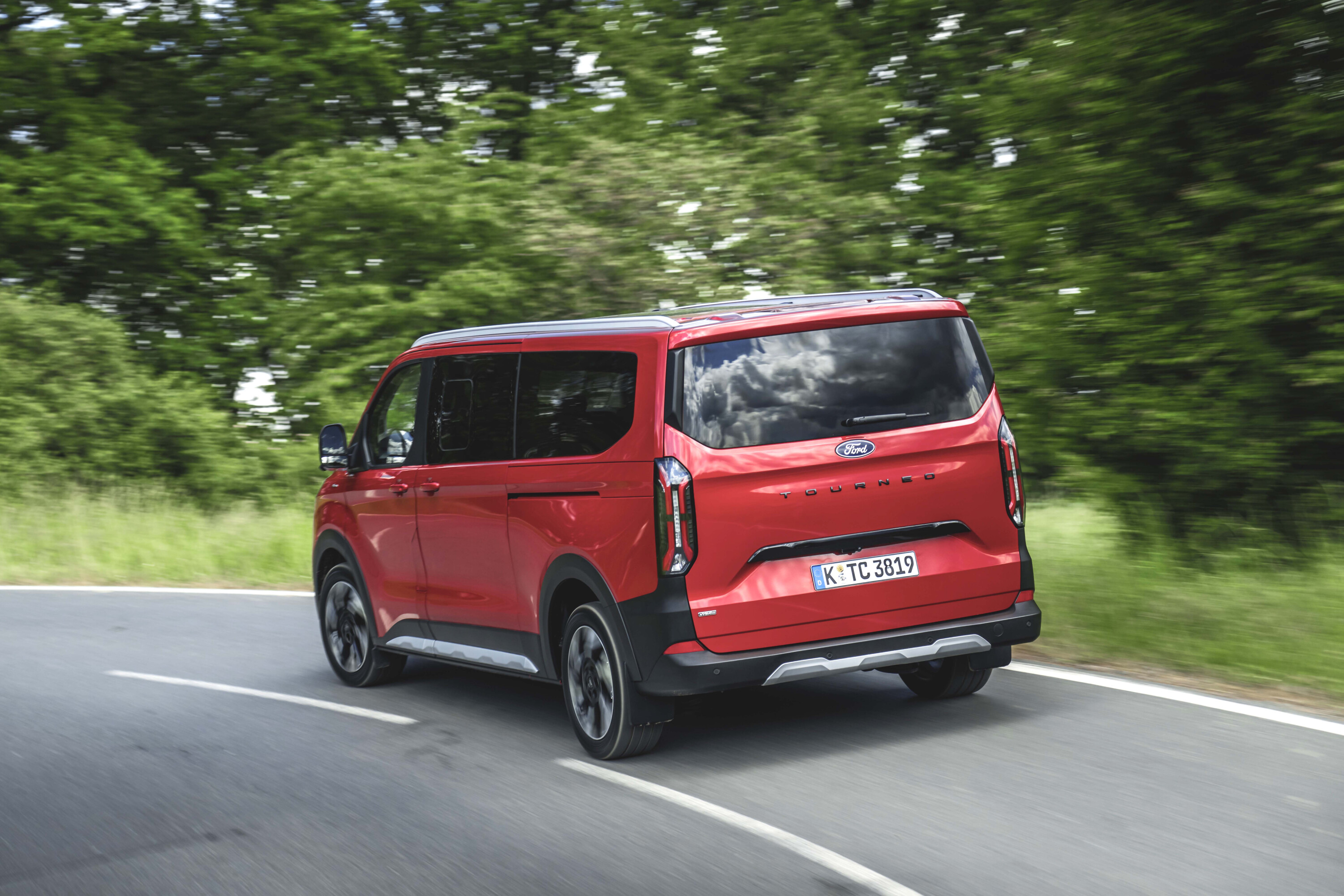
The suspension is also shared with the Transit Custom, with a MacPherson strut front and independent trailing arms at the rear, but with Tourneo-specific spring and damper rates that deliver a softer, more comfortable ride.
It works well, too, with little head-toss and jostling when going over speedbumps or lumpy ground.
At over five metres long and two metres wide, it’s got a footprint that’s slightly bigger than a 300-Series Toyota LandCruiser. However, with the driver sitting much closer to the front bumper and enjoying excellent vision through the windshield and side glass, along with the presence of huge mirrors (with separate wide-angle parabolic mirrors), blind spot monitoring and, in the Titanium X grade, a top-down camera view, it’s no challenge threading the Tourneo through traffic. A very car-like turning circle of 10.9 metres certainly helps, too.
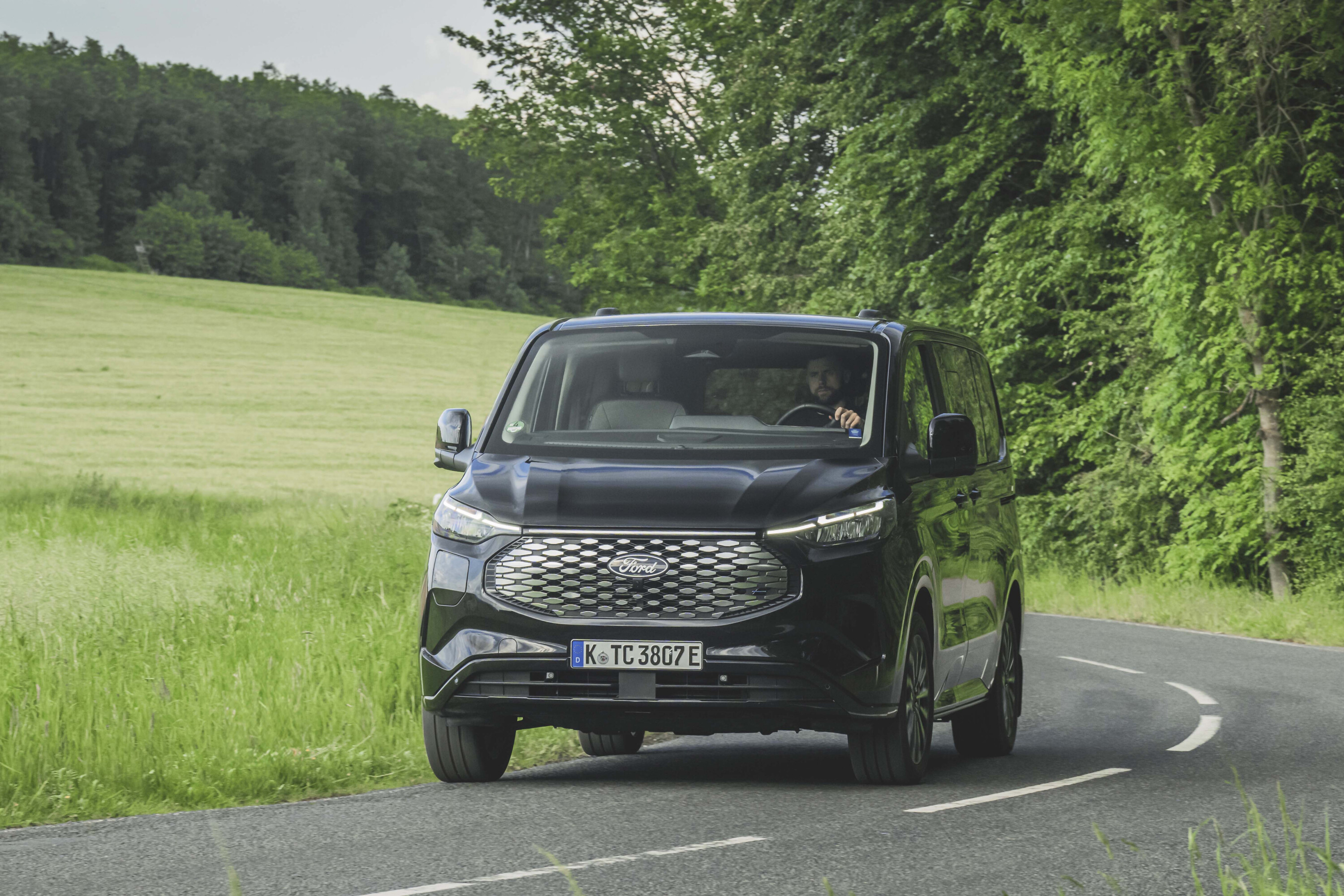
Interior comfort, space and storage
The upshot of borrowing the bones of a commercial vehicle to create a people-mover is that you get an interior that’s properly cavernous. In the Tourneo’s case, you also get an interior that’s hugely versatile as well.
The Tourneo in Australian guise will come in an eight-seat configuration, with the two front seats separated by enough space to allow walk-through access to the second row. Furthermore, with each seat in the second and third rows mounted on a sliding rail and easily removable by hand (no need to break out the toolbox), the Tourneo can be reconfigured to whatever layout makes sense to you.
Need to take you, your spouse and six offspring to (presumably a Catholic) church on Sunday? Easily done. Heading to the coast with a few of your surfer buddies and can’t be bothered strapping your surfboards to the roofrack? Just remove the rear seats on one side, and carry the boards internally.
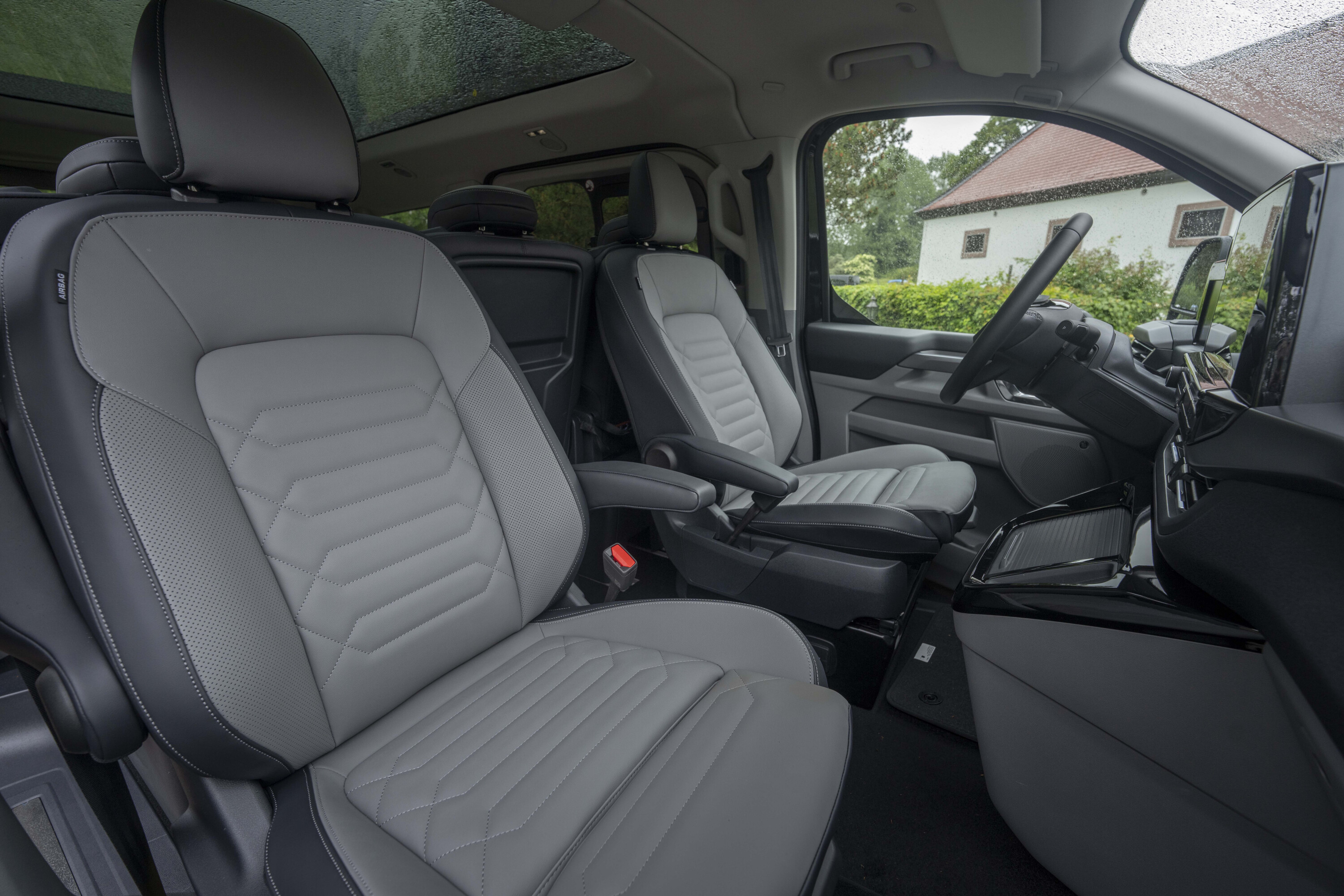
You might want a hand to remove the third row in its entirety, however, as it’s split 60/40 with the bigger portion likely too heavy for one person to handle.
The middle seat in the second row can also fold its backrest completely flat, revealing a hard tabletop with integrated cupholders and a lip to keep small items from sliding off, while the second row seats can either face forward for an airliner-style layout, or face backward for club-style seating.
The base of each rear seat is also equipped with a shallow storage drawer (though each only provides enough room for a wallet or a pair of thongs), while there are plenty of other stowage options throughout the cabin – including a pair of curious smartphone holsters on each C-pillar.
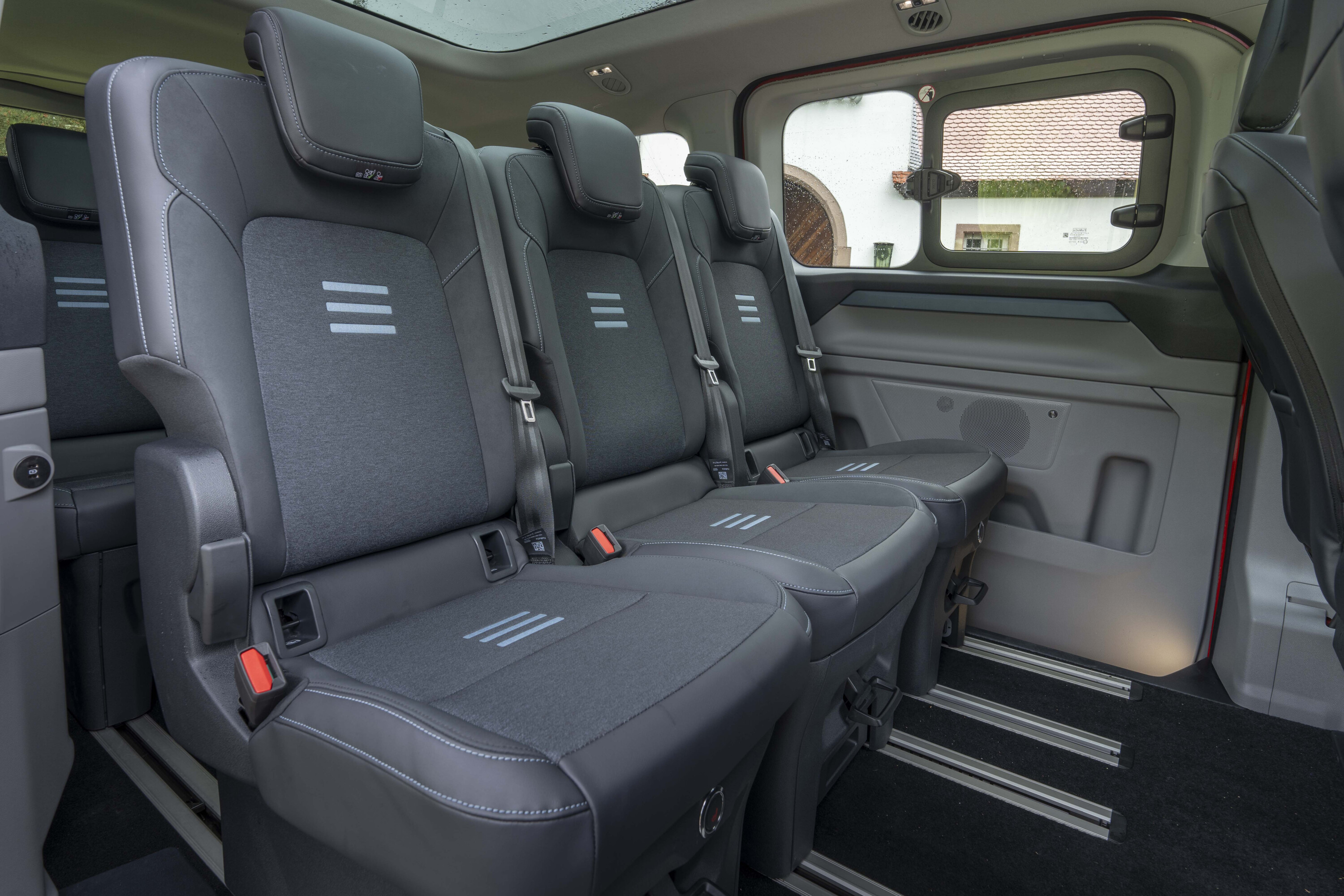
Up front, the Tourneo takes the dash of the Transit Custom – including all of its numerous storage cubbies, pockets and trays – and grafts on a vestigial centre console, which houses a pair of cupholders behind a roller shutter, a coin tray, a couple of additional USB ports (USB-C and USB-A), and a wireless phone charging pad.
Backseaters also get plenty of device charging options, with a pair of USB-C ports mounted low on each C-pillar, though cupholders are in shorter supply.
If you don’t fold down the middle centre seat, there’s just two drink receptacles for six people back there, not ideal on a hot day, but a bigger issue when the sun’s out might be that big glass roof in the Tourneo Titanium X.
It provides an unobstructed view of the sky and floods the cabin with light, but it’s not equipped with a retractable sunshade which may be a drawback on particularly hot days.

We’ll have to wait for some local summertime testing to see if the harsh Aussie sun overwhelms the tint and coatings of that glass panel, but at least there’s reasonable coverage of air vents throughout the roof, as well as separate controls for the rear zone of the tri-zone climate control.
It’s spacious enough for six regular-sized adults to sit back there without rubbing elbows, with easy entry and egress even with the middle row facing rearward.
With all seats facing forward, the outboard middle seats tilt and slide forward with a light touch to provide access to the third row. However, it’s the space behind the seats that may cramp the style of some users.

Australia is only confirmed to be getting the shorter-wheelbase “L1” variant of the Tourneo, with the 40cm-longer “L2” staying in Europe.
The vast majority of that length difference is seen in the boot, with the usable luggage area behind the third row being substantially smaller in the L1 at 1152 litres, versus the L2’s 1534L.
For shuttle/limo transfer operators who are dropping travellers off to the airport, that shortfall may be most keenly felt.
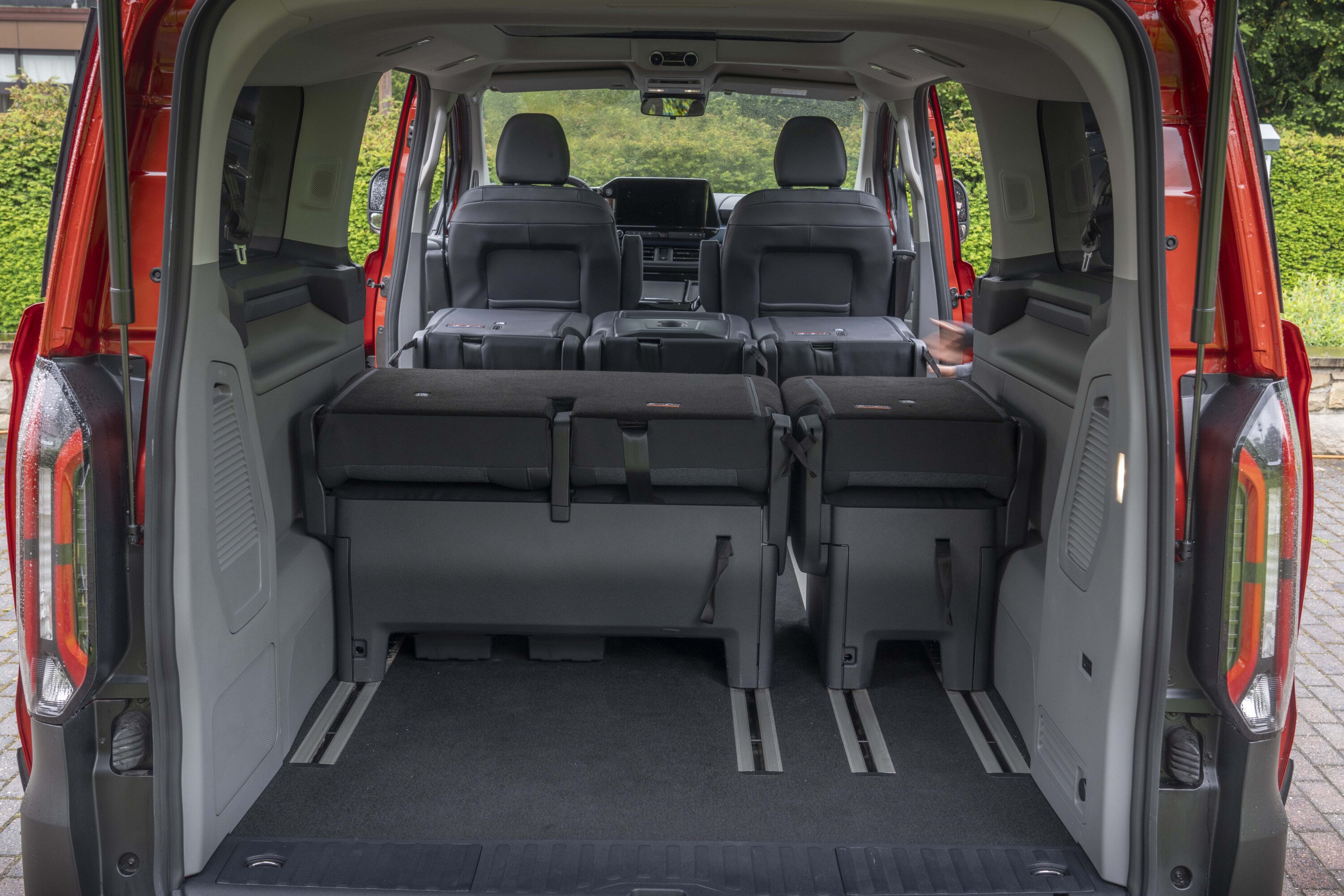
How much fuel does the Ford Tourneo use?
Our first taste of the Tourneo took place in and around Frankfurt, Germany, and as such included a fair degree of high-speed driving on unrestricted sections of the autobahn.
Even so, we saw an average consumption of 11.3L/100km, which was right on Ford’s claim for this particular powertrain.

How safe is the Ford Tourneo?
Standard safety gear includes a suite of six airbags covering dual front and side bags for the first row, and curtain airbags.
Driver aids include active cruise control, blind spot monitoring, lane keep assist, rear cross-traffic alert, frontal collision warning, AEB, a rear parking camera (360-degree camera on Titanium X). ANCAP has yet to test the Tourneo.
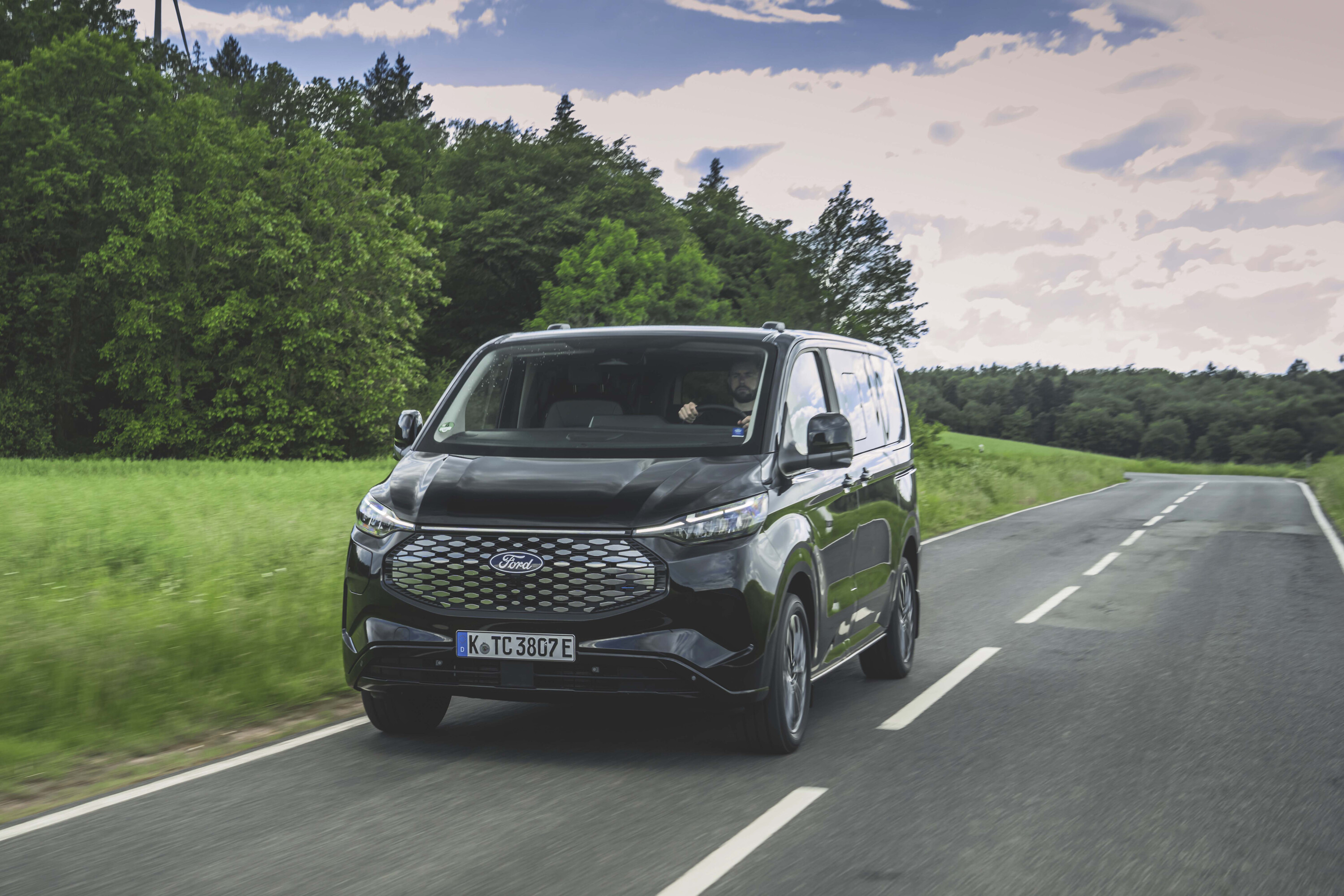
VERDICT
As a family-carrying alternative to an SUV, the Tourneo is superior in many regards. You get more cabin, for one. Way more.
It’s also easier to park, the sliding doors carry no risk of door dings in tight carparks, and being able to quickly rip out the back seats means it’ll handle trips to the hardware store probably just as well as a Ranger.
Yeah, the maximum towing capacity of 2500kg lags behind that of an Everest, but if you don’t tow heavy things or like to go off road, that metric doesn’t matter.
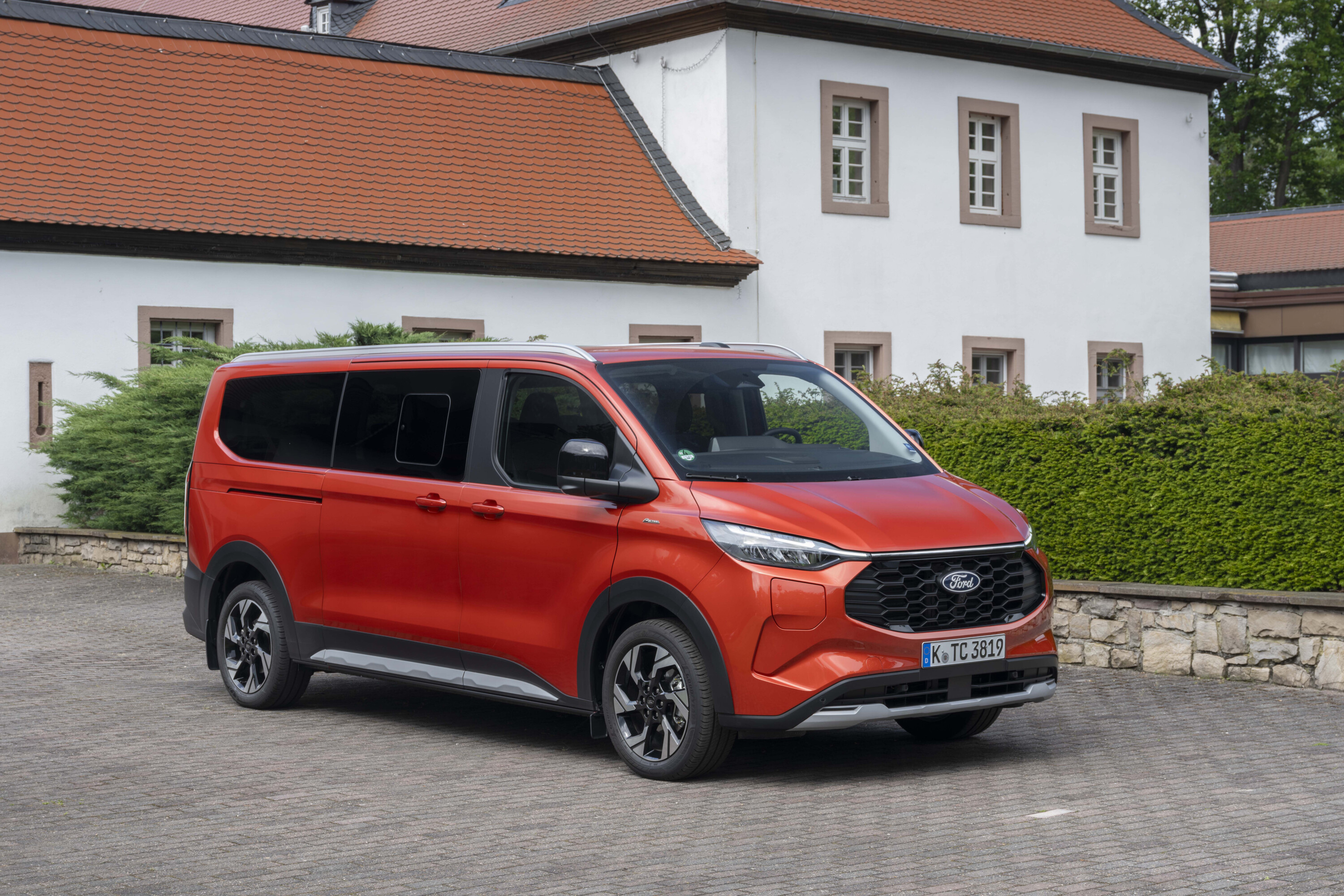
The Tourneo also has a faint whiff of premiumness to it, even though its pricing is at the more reasonable end of the spectrum.
That’s something that’s arguably a direct result of the new Transit Custom that it’s based on being such a well-sorted thing – as a result, the Tourneo’s commercial vehicle lineage isn’t so obvious.
Combine that to agreeable on-road dynamics, and the Tourneo shapes up as a primo pick as a people mover. We’ll put it through the wringer on local roads once it gets here, but so far the Tourneo makes a strong case as one of the best people movers around.
Things we like
- Spacious and reconfigurable cabin
- Drives more like a car than a van
- Attractive exterior styling
- Solid price/spec offering
Not so much
- Luggage space could be improved upon
- Glass roof may be a liability in summer
- No centre seat provision for ISOFIX
- No electric/hybrid option… yet
We recommend
-
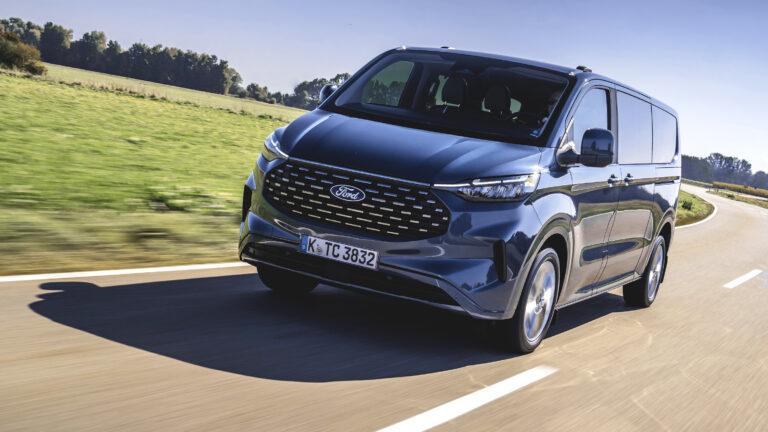 News
News2024.5 Ford Tourneo people mover: Price and features for new eight-seater
Ford joins the people-mover fight in Australia, confirming the Tourneo (Tourneo Custom in Europe) will reach Australia in the fourth quarter of 2024.
-
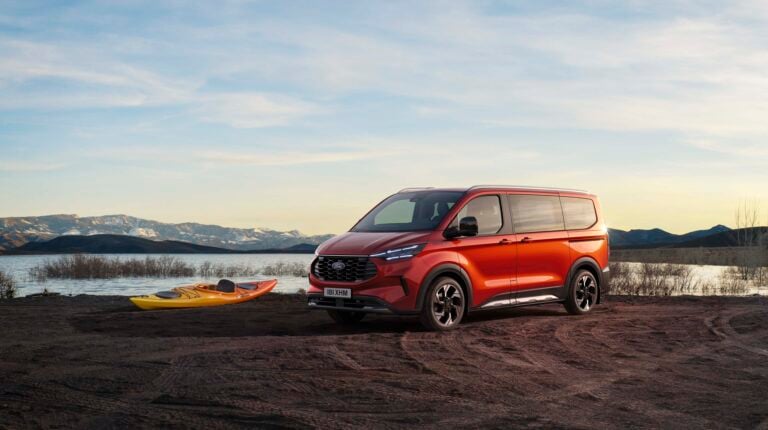 News
NewsFord Tourneo Custom revealed with BEV, PHEV and diesel power
Ford’s new family people-mover van has been unveiled in Europe, but plans are unclear for Australia
-
 News
NewsNew car calendar 2026: All the new cars coming to Australia next year
Here’s the WhichCar by Wheels guide to all the new cars that will launch in Australia in 2026. Check back in regularly for updates...



